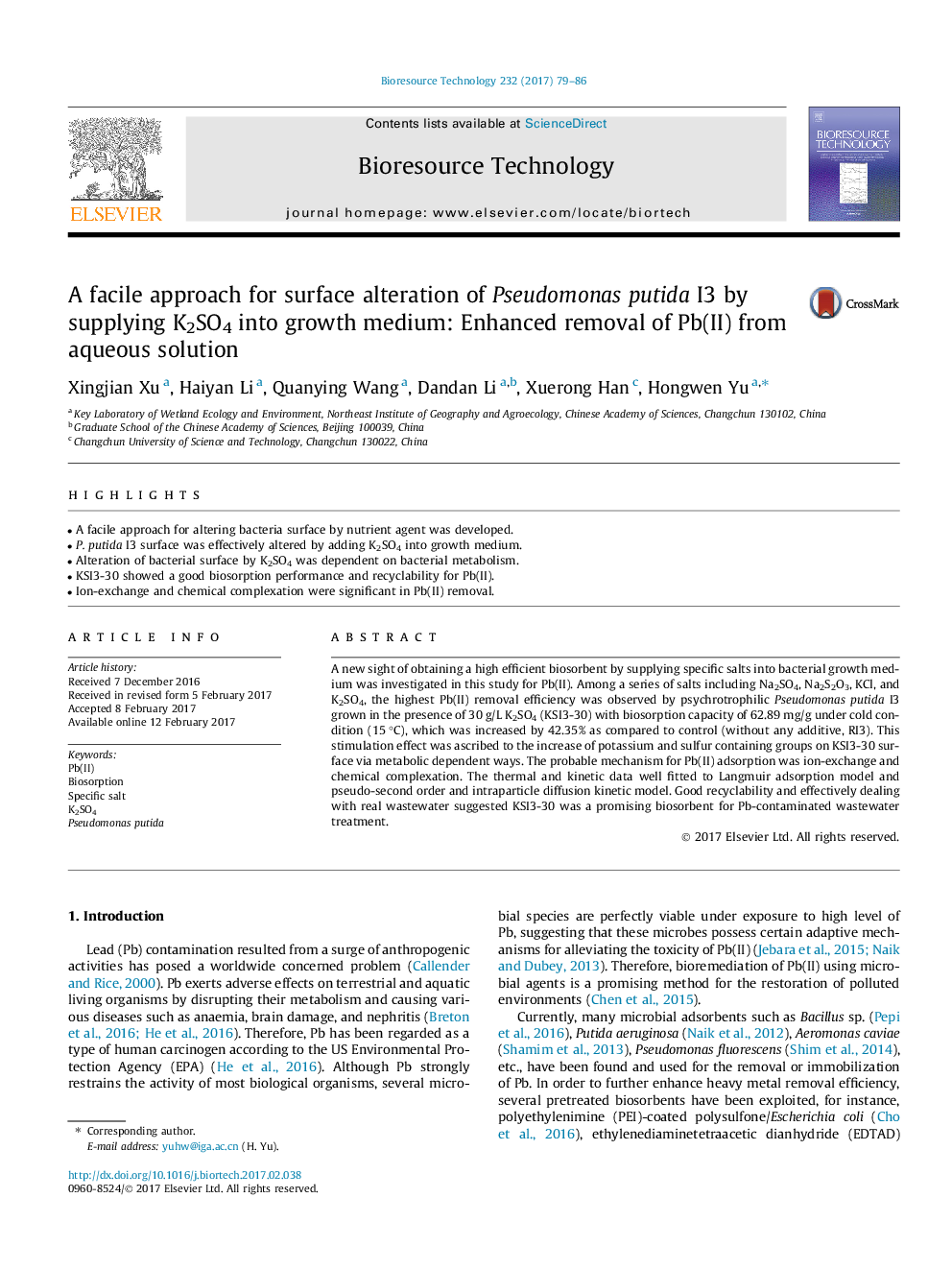| Article ID | Journal | Published Year | Pages | File Type |
|---|---|---|---|---|
| 4997549 | Bioresource Technology | 2017 | 8 Pages |
â¢A facile approach for altering bacteria surface by nutrient agent was developed.â¢P. putida I3 surface was effectively altered by adding K2SO4 into growth medium.â¢Alteration of bacterial surface by K2SO4 was dependent on bacterial metabolism.â¢KSI3-30 showed a good biosorption performance and recyclability for Pb(II).â¢Ion-exchange and chemical complexation were significant in Pb(II) removal.
A new sight of obtaining a high efficient biosorbent by supplying specific salts into bacterial growth medium was investigated in this study for Pb(II). Among a series of salts including Na2SO4, Na2S2O3, KCl, and K2SO4, the highest Pb(II) removal efficiency was observed by psychrotrophilic Pseudomonas putida I3 grown in the presence of 30 g/L K2SO4 (KSI3-30) with biosorption capacity of 62.89 mg/g under cold condition (15 °C), which was increased by 42.35% as compared to control (without any additive, RI3). This stimulation effect was ascribed to the increase of potassium and sulfur containing groups on KSI3-30 surface via metabolic dependent ways. The probable mechanism for Pb(II) adsorption was ion-exchange and chemical complexation. The thermal and kinetic data well fitted to Langmuir adsorption model and pseudo-second order and intraparticle diffusion kinetic model. Good recyclability and effectively dealing with real wastewater suggested KSI3-30 was a promising biosorbent for Pb-contaminated wastewater treatment.
